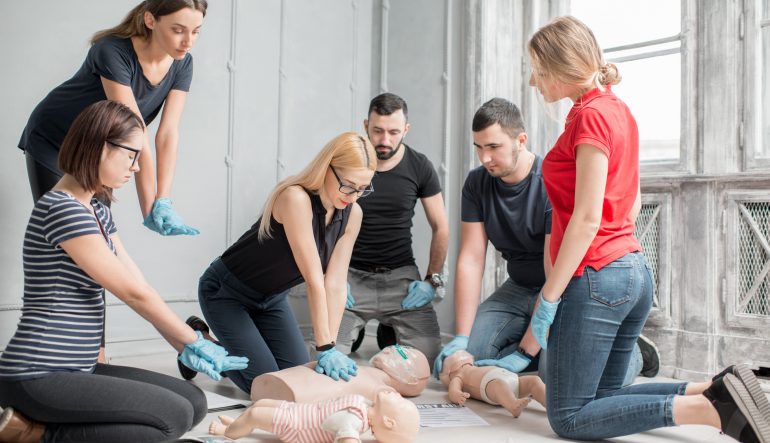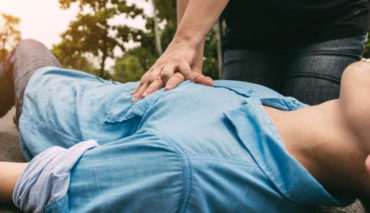Why do people learn first aid?
When it comes to first aid training, participation comes down to three core motivations: I’m doing it because I have to; I’m doing it because I should; and I’m doing it because I want to.
Because I have to
The most common reason for a person participating in first aid training is because it’s a requirement of their profession.
For example, take this series of interviews of family members of Parisians with a coronary disease.
It found two-thirds of respondents who had CPR training, received it through their work. By comparison, only 3.5 per cent had voluntarily participated in CPR training in response to living with someone with a coronary disease.
A similar study conducted in the US found 59 per cent of family members of cardiac patients with CPR training, received it through work. Only 8 per cent opted-in for training out of concern for their family member.
Because I should
Having a medical professional recommend training, or an otherwise-influenced feeling of ethical obligation, does impact CPR training rates.
For example, this US study found a 15 per cent take-up of a CPR training opportunity on advice from a physician. In another, 57 per cent said they’d do first aid training if a doctor told them to.
In both these studies, the participants were family members of cardiac patients. It is interesting to note that that fact alone, was not a motivator to learn CPR.
In fact, most family members of people at-risk of sudden cardiac arrest do not maintain basic first aid and emergency response skills. For the most part, they have to be told to do it, by someone they trust – such as a GP or a cardiologist.
Because I want to
That situation changes, if the risk becomes real.
Research shows that personal motivation to participate in first aid training significantly increases among people who have survived a cardiac event, or are close to someone who has.
For example, this study recognised that personal experience is a powerful motivator in wanting to learn in order to help others.
This is dangerous however, when you consider 50 per cent of heart attacks are fatal – and less than one per cent of people who experience a sudden cardiac arrest, survive.
RELATED ARTICLE: Can we predict sudden cardiac arrest?
Altruism is another factor determining motivation to establish and maintain first aid skills among non-medical professionals.
For these people, wanting to be prepared, and a personal sense of responsibility for the people around them, motivates active participation in training.
An excellent example of this type of person is a volunteer first responder, such as surf lifesavers. Studies into the altruistic aspects of the motivation of such volunteers identify their awareness of the importance of helping others, to individuals and society.
Does motivation matter?
A person’s motivation to participate in training makes a difference in their preparedness to respond to an emergency in the future.
For example, this study found that people who did the training because they wanted to, were more likely to help someone survive a cardiac arrest compared to those who did training because they had to.
This matters, because preparedness to respond effectively to an emergency such as an out-of-hospital cardiac arrest saves lives.
The first three steps in the cardiac arrest Chain of Survival rely on a bystander’s readiness to recognise what is happening, and rapidly render aid.
The more people who have the skills and confidence to do this quickly, the better our chances of survival if we were to experience an out-of-hospital cardiac arrest.
RELATED ARTICLE: CPR and defibrillation saves lives



